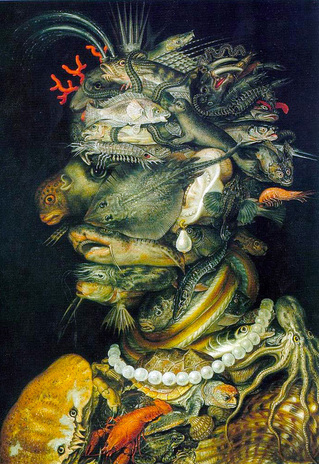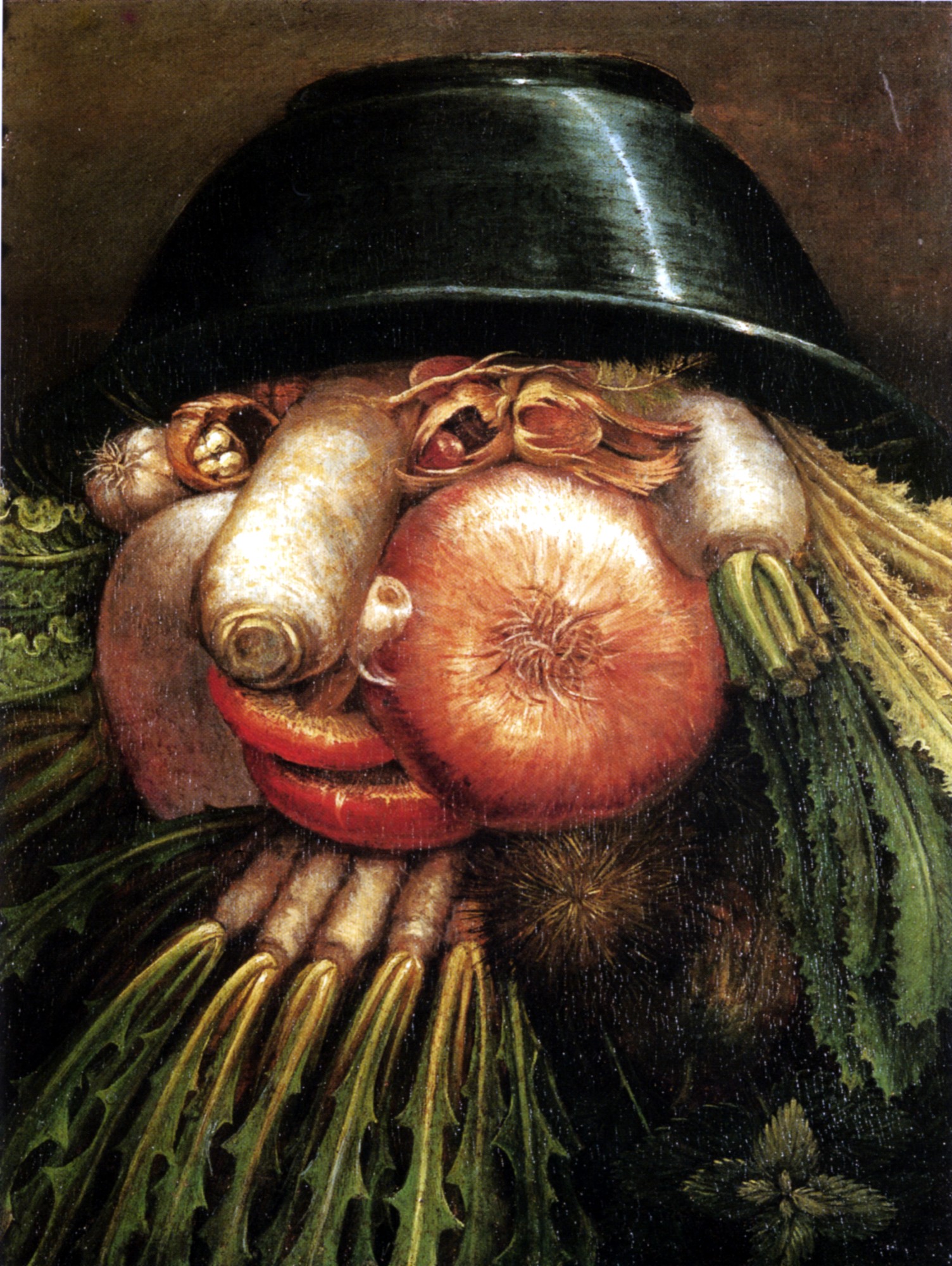|
As an advertising photographer, at times in my career I had to create art using food--fresh food, cooked food--often using strange food stylist techniques to make the food look its best (brushing steak sauce on a near-raw turkey and torching it), to last longer (using mashed potatoes in place of a scoop of melting ice cream), or making soups more appealing (marbles under the ingredients so they show). In drinks we used non-melting, hand sculpted acrylic ice cubes and silver cards behind to reflect the color. But for my more artistic work, I loved using food in surrealistic ways... huge tomatoes sitting atop a lamp table in a miniature set, or a "gigantic" wine bottle and glass with a tag saying "drink me" in another miniature room. But the absolute king of using food in surrealistic ways was the 16th century Italian artist, Giuseppe Arcimboldo, born in Milan in 1527. Coming from artistic stock (his father was Biagio, a painter during the Renaissance), Arcimboldo at first had more traditional commissions: stained glass window designs in the Duomo; frescoes for the Cathedral of Monza; the design of a large tapestry for the Como Cathedral; and he was a court portraitist to Ferdinand I in Vienna, and to Maximilian II and his son Rudolf II in Prague where he also took on duties of court decorator and costume designer. His work took a turn toward surrealism and food themes when King Augustus of Saxony commissioned a copy of his "The Four Seasons" which incorporates his own monarchic symbols.  Arcimboldo's traditional religious works have mostly fallen into oblivion, but his portraits of human heads made up of vegetables, fruit and tree roots, were surprisingly admired by his contemporaries and remain unique examples of surrealism today. Debates continue as to whether his paintings were purposeful by design or the product of a deranged mind. Many art scholars argue that given the Renaissance fascination with riddles, puzzles, bizarre subject and even metamorphic art (an image of one thing also being seen as a second thing) that he was simply following his own interpretations of poplar trends.
0 Comments
Your comment will be posted after it is approved.
Leave a Reply. |
Categories
All
Archive
June 2024
|













 RSS Feed
RSS Feed
